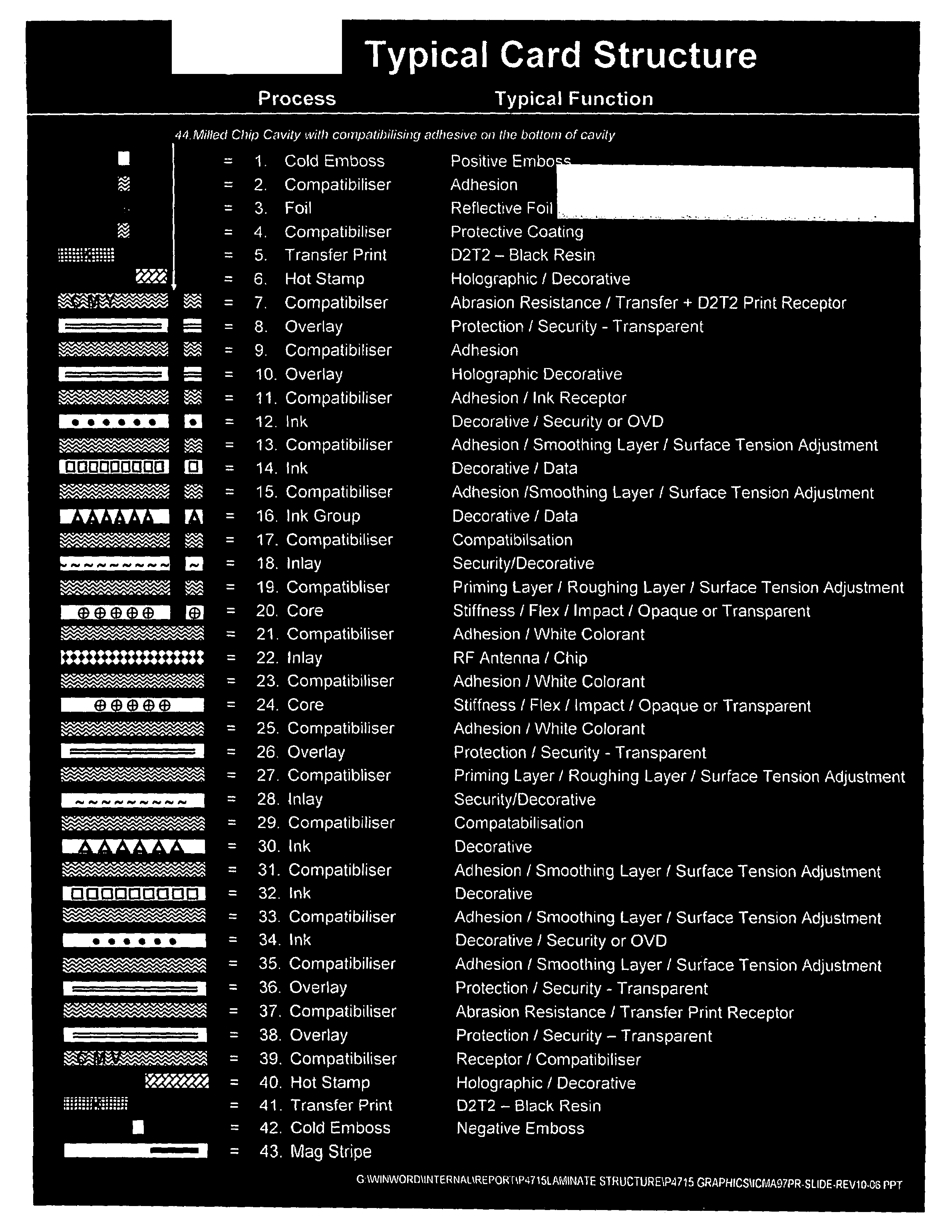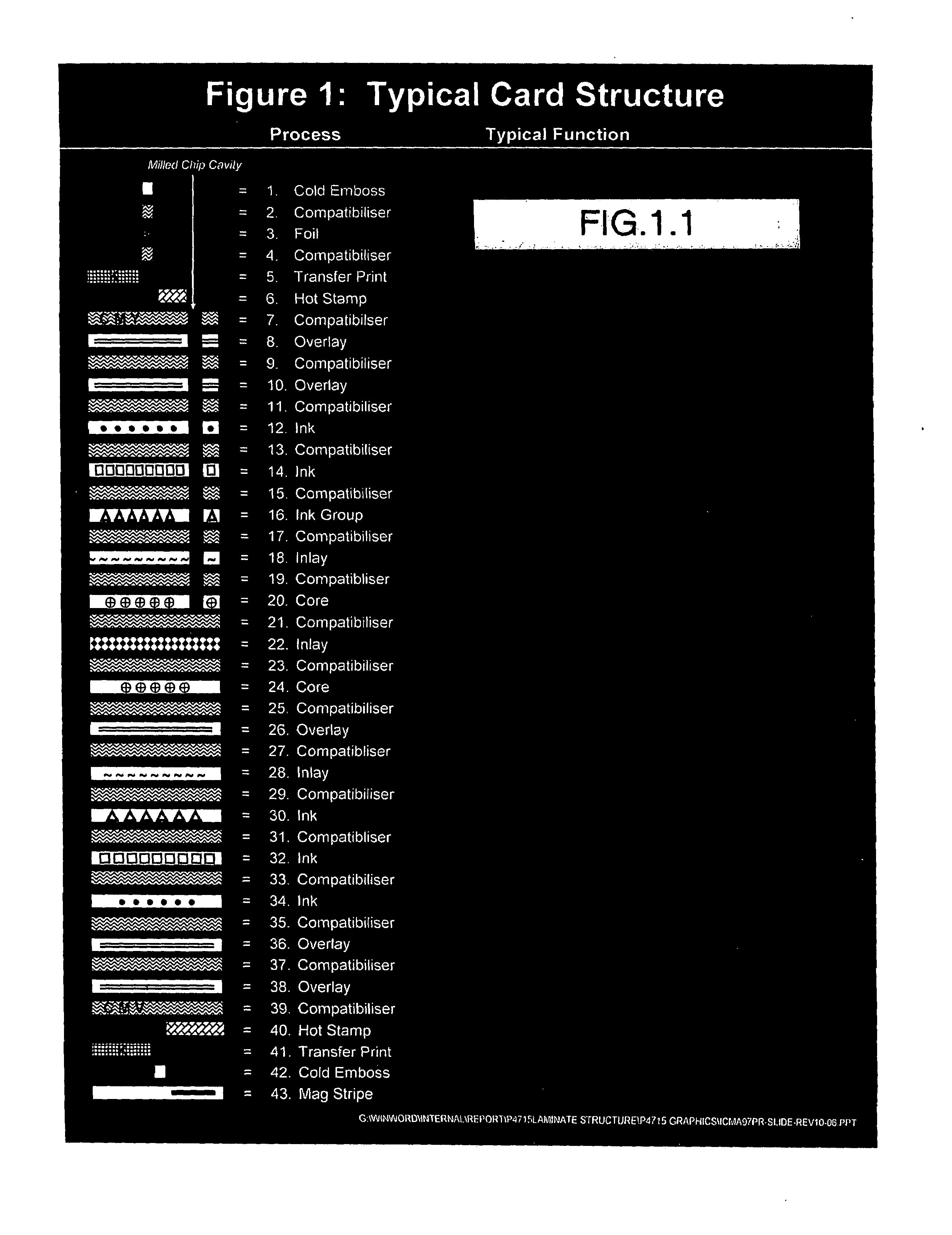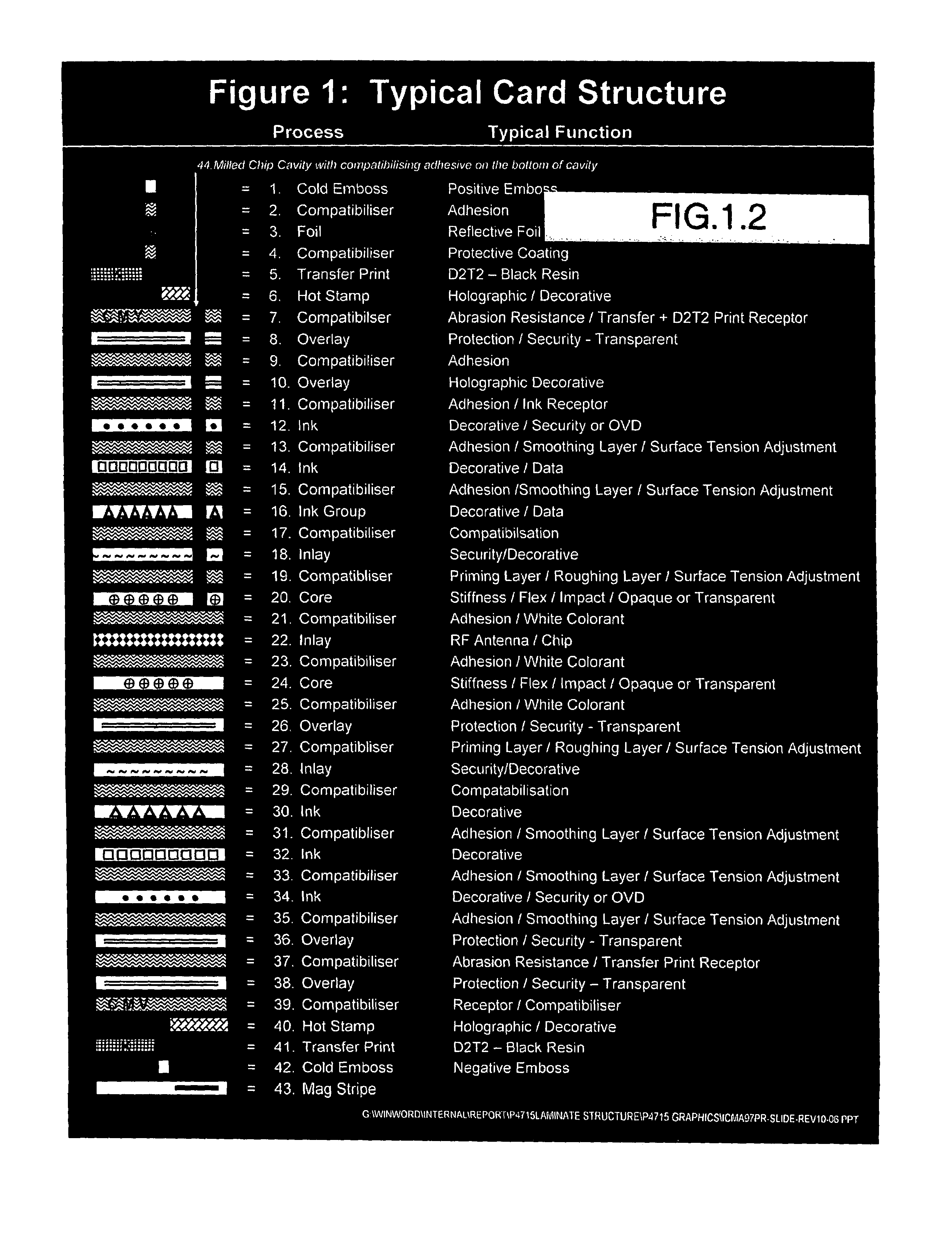Laminated identification document
a technology of identification documents and laminates, applied in the field of laminated documents, can solve the problems of identity theft rampant, inability to verify one's true identity, and inability to meet the requirements of the identity verification process, so as to reduce the explosive laser force, increase the compatibility strength, and high cohesive strength
- Summary
- Abstract
- Description
- Claims
- Application Information
AI Technical Summary
Benefits of technology
Problems solved by technology
Method used
Image
Examples
example 1
[0129]UV102 (FM Group), a formulated UV activated vinyl acrylate copolymer (hard material) concentration of 100% was used as the compatibilizer (FIG. 2, layer 11). Layer 12 was a lithographic print of Gans UV Black ink 100% density over core 20 in a patch of at least 1″×3″ to allow for peel tests. Peels were checked over both the UV Black and the unprinted white core. After UV-light exposure the material was brittle. When laminated with uncoated clear PVC overlay under condition Laminate 1 there was no adhesion between layers 10 and 20 for the ISO 90 degree peel test.
[0130]All peel data referred to herein are in accordance with this test. These tests were repeated with the overlay changed to Polyester (PET) and Polycarbonate(PC) with similar results.
LAYERComposition10Overlay (PVC or Polyester (PET) or Polycarbonate)11Compatibilizer UV 10212100% Black UV Ink (full bleed20Core (PVC, PET or PC)26Overlay (PVC or Polyester (PET) or Polycarbonate).
example 2
[0131]UV103 (FM Group) a formulated UV activated vinyl acrylate copolymer (soft material) concentration of 100% was used as the compatibilizer (FIG. 2, layer 11). After UV-light exposure the material was brittle. When laminated under condition Laminate 1 there was no adhesion between layers #10-#20
LAYERComposition10Overlay (PVC or Polyester (PET) or Polycarbonate)11Compatibilizer UV 10312100% Black UV Ink (full bleed20Core (PVC, PET or PC)26Overlay (PVC or Polyester (PET) or Polycarbonate).
Example 3
[0132]A mixture consisting of UV102 (FM Group) a UV activated vinyl acrylate copolymer (hard material) concentration of 50% and UV103 (FM Group) a UV activated vinyl acrylate copolymer (soft material) concentration of 50% was used as the compatibilizer (FIG. 2, layer 11). This material will be called UV104-5050
[0133]After UV-light exposure the material formed strong film. When laminated immediately with 1.8 mil PVC as Layer 10 under condition Laminate 1 there was 90 degree adhesion over w...
example 3
[0135]The same structures as Example 3 but an additional 5% of curing agent (C5) was added. There was 90 degree adhesion over white or UV black between layers 10 to 20 of 2.4 Newton's / mm more then 5 times the ISO bankcard requirement (0.45 Newton / mm). High adhesion was reached due to combination of UV curing and thermo curing processes.
PUM
| Property | Measurement | Unit |
|---|---|---|
| Nanoscale particle size | aaaaa | aaaaa |
| Fraction | aaaaa | aaaaa |
| Fraction | aaaaa | aaaaa |
Abstract
Description
Claims
Application Information
 Login to View More
Login to View More - R&D
- Intellectual Property
- Life Sciences
- Materials
- Tech Scout
- Unparalleled Data Quality
- Higher Quality Content
- 60% Fewer Hallucinations
Browse by: Latest US Patents, China's latest patents, Technical Efficacy Thesaurus, Application Domain, Technology Topic, Popular Technical Reports.
© 2025 PatSnap. All rights reserved.Legal|Privacy policy|Modern Slavery Act Transparency Statement|Sitemap|About US| Contact US: help@patsnap.com



